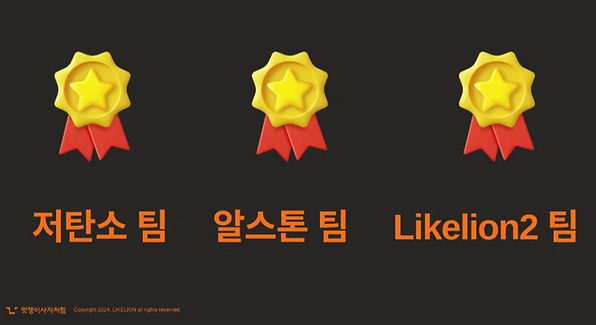

Overview
VariUs is a map-based application designed to help transportation-vulnerable individuals—like wheelchair users, parents with strollers, and elderly people—find barrier-free facilities more easily. The app provides detailed facility information, user-generated reviews, and a reward system to encourage contributions. By creating a platform centered on inclusivity, VariUs aims to reduce daily obstacles for these individuals and promote greater awareness of accessibility needs.
As the UX designer of this project, I:
-
Conducted user research, usability testing, and synthesized feedback to improve app design.
-
Designed high-fidelity wireframes to aid app functionalities explanation, focusing on user accessibility and clarity.
-
Created a visually engaging landing page that highlighted the app's purpose and usability.
The Problem
For transportation-vulnerable individuals, finding accessible locations can be unnecessarily time-consuming and frustrating. Everyday barriers like small steps, narrow pathways, and inaccessible restrooms can make even simple outings difficult. In areas like Hyehwa-dong, Seoul, out of over 100 restaurants, only three are wheelchair- or stroller-accessible. Parents with strollers also face increasing restrictions with the rise of "No Kids Zones."
Despite efforts to improve accessibility, only 0.32% of mandatory buildings in Korea are certified as barrier-free. The lack of reliable and comprehensive accessibility information leaves individuals struggling to locate suitable facilities, limiting their mobility and quality of life.
Solution
VariUs addresses these challenges by providing a platform where users can easily search for barrier-free facilities across both urban and rural areas. The app includes detailed filters for accessibility features, a user-driven review and rating system to ensure data accuracy, and a point-based reward system to encourage active participation. By combining these features, VariUs creates a collaborative space for users to share insights, discover accessible locations, and promote inclusivity in their communities.
User Research
User interview
To gain firsthand insights into the challenges of transportation-vulnerable individuals, I conducted semi-structured interviews that shed light on their daily struggles and unmet needs. I recruited 5 participants with diverse mobility needs: 2 wheelchair users, 2 parents who regularly use strollers, and 1 elderly individual. Their ages ranged from 20 to 65, and they represented both urban and suburban areas near Seoul.
The primary objectives of the interview were to:
-
Understand accessibility challenges: Uncover the specific mobility barriers and daily difficulties faced by transportation-vulnerable users.
-
Identify solution gaps: Examine the shortcomings of current accessibility services to pinpoint areas for improvement.
-
Inform inclusive design: Collect insights to shape a user-friendly app that addresses real-world needs.
.png)
1. Barriers Faced
Participants highlighted several significant obstacles to accessibility. Narrow entrances were the most frequently mentioned issue, with 85% identifying them as a primary barrier. The lack of ramps was noted by 70%, while 40% reported difficulties with inaccessible restrooms. Additionally, 20% pointed to unreliable online information as a challenge, and 10% cited difficulty using Kiosks as a problem.
.png)
2. Preferred Features
When discussing app features, 45% of participants emphasized the importance of accessibility filters, allowing users to search for specific features like ramps, elevators, and parking. Reviews from users with similar needs were valued by 30%, while 15% highlighted the need for verified data to ensure reliability. Another 15% suggested incentivized contributions as a way to encourage active participation and engagement.
These insights directly shaped the core functionality of the app. Detailed filters were prioritized to help users quickly locate facilities that meet their specific needs. A review system was designed to emphasize trust and reliability by showcasing feedback from users with similar experiences. Mechanisms for verifying data and rewarding contributions were also integrated to foster collaboration and engagement.
Competitive Analysis
Two apps with similar goals, WheelBee and WillChair, provided useful comparisons for developing VariUs:


WheelBee focuses on wheelchair users and provides basic accessibility reviews. However, it struggles with low engagement due to its narrow audience and lack of incentives for contributions.

WillChair offers a more user-friendly interface and better engagement through a review system. However, it is limited to metropolitan areas and lacks detailed accessibility data, making it less useful for users outside these regions.
How VariUs Stands Out
VariUs sets itself apart by catering to multiple transportation-vulnerable groups—not just wheelchair users—and by providing nationwide accessibility data. The app also incentivizes participation with a point-based reward system and includes a “Vari Certified” badge for high-rated facilities, ensuring trustworthiness and engagement.
Ideation
Lo-fi Wireframes
Below are four lo-fi wireframes I created, each reflecting insights gathered from user research and competitive analysis. They include the main map interface, a restaurant info screen, dedicated accessibility filters, and a review-writing interface—all designed with ease of use and inclusivity in mind.

The Landing Page
I co-designed the landing page for VariUs to introduce the app’s mission and core features, reflecting its focus on accessibility and inclusivity. Using strong purple tones and friendly illustrations, the page embodies VariUs’ empowering mission: “Empowering individuals to navigate the world without barriers.”
View VariUs landing page here.

Search and Filter Locations
-
Users can discover nearby locations like restaurants, cafes, and subway stations using an interactive map with customizable accessibility filters.
-
Users can search for places based on features like ramps, accessible parking, and distance, ensuring options tailored to their specific needs.

Accessbility Filters
-
Users can use an intuitive accessibility filter system to categorize features as either traffic-vulnerable-friendly (e.g., ramps, elevators) or not (e.g., stairs, steep curbs). Positive features are marked in green, while negative features are highlighted in red for quick assessments.


User-centered Reviews
-
Users write detailed reviews with star ratings and provide feedback on specific accessibility features like ramps, parking, and restroom availability.
-
Users can browse reviews with photos and aggregated ratings to quickly understand a location’s accessibility before visiting.


Building Reporting and Recommendations
-
Non-traffic-vulnerable users can upload photos of features like steps or ramps and recommend buildings to traffic-vulnerable users by selecting the "Recommend" button.
-
Contributions earn points, redeemable for gift cards, creating an engaging way to support accessibility improvements.
Results

VariUs was developed as part of a national Ideathon for Korean international students in U.S. colleges, hosted by LikeALion (멋쟁이사자처럼). Competing against teams across the country, our team "알스톤 (Allston)" ranked in the Top 3 for its innovative and inclusive approach to solving accessibility challenges.
The app was praised for its simplicity, functionality, and focus on inclusivity. VariUs stands out as a solution that not only empowers transportation-vulnerable individuals but also raises awareness about the importance of accessibility in everyday spaces.
Reflection
Working on VariUs was a valuable experience that deepened my understanding of how design can create real impact. I learned to approach design with both functionality and empathy in mind, ensuring it not only solves problems but also supports and includes its users. This project also gave me insight into how to effectively communicate a mission through cohesive visuals and user-centered features. It reinforced the potential of thoughtful design to empower individuals and drive positive change.